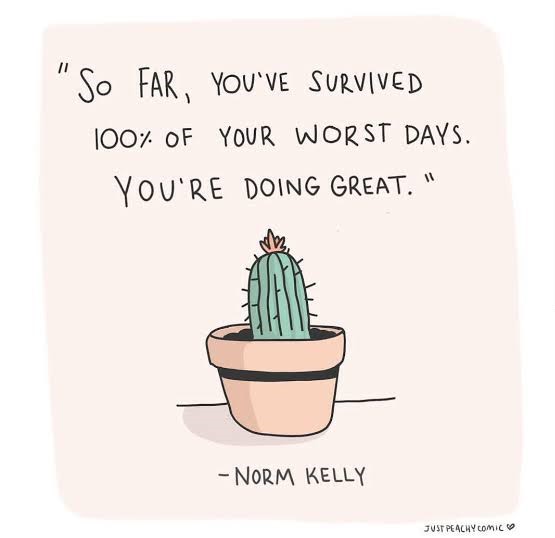Are you having a hard time adjusting to schooling at home?
You're not alone, and you're in luck!
Hyperion Computerworks owner Kate MacQuarrie was part of a homeschooling family
from
1st-11th grade, and is here to offer some insider tips.
Homeschooling isn’t for everyone. It can be equally challenging for the student and care-provider alike during ordinary circumstances. And well, challenging doesn’t really begin to describe it when it’s not a path that you have chosen to pursue, but rather a decision that’s been made for you, as is the case for most parents and guardians of school-aged children these days.
Challenging, yes, but not impossible. That’s why I wanted to put together this post from the perspective of a homeschooling and online learning veteran, so that you might have some insight on how you can make this experience as painless and positive as possible.
A little background about me:

I was one of the first 5 students enrolled in K12’s California Virtual Academy when they opened their virtual doors nearly 20 years ago. After spending several years running her own independent homeschooling based co-op, my mom finished her Teaching Credential and Master’s of Early Childhood Development, and joined K12 as one of their distance-educators.
I spent 1st-8th grade as a CAVA student before moving on to a different home-based charter school for 9th-11th grade, where I graduated a year early and second in my class.
As an adult, I’ve utilized online learning through Portland’s colleges as a means of completing secondary education while working full-time.
Each of these experiences have been wildly different, and I’ve enjoyed watching online learning evolve and develop into a wonderful alternative to brick-and-mortar based education.
Alright, that’s more than enough about me, let’s dive in.
Tip #1:
Make A Contract
Homeschooling can be difficult for both children and parents, but it’s a lot harder if the school day starts with an extended debate about doing it.
Come to an agreement about the terms, write it down, and sign it, parents and children. It may sounds a bit odd, but it works! If everyone agrees when school starts and how it’s going to go, you’ll all get through the day’s lessons more enjoyably.
Many families find using this method useful and necessary for creating structure and boundaries. Students who school at home learn how to take responsibility for their learning. Let your child decide what subject to start with, if possible.
Pro tip: give your child a choice between two subjects.
Ask, “Would you like to read first or do math?”
Have a conversation with your child and help them figure out what needs to get done and allow them to decide WHEN.
What time will you wake up?
How much time do you need for showering, feeding pets, preparing your breakfast, and completing morning tasks?
When would you like to complete chores that need to be done?
Do you have virtual meetings or lessons that must be done at a specific time?
How many hours do you think you need to complete your assignments?
What time will you begin doing school work?
What time is your break, and when will you begin working again?
What time will you eat lunch?
What time will you finish your day?
At lunchtime, or throughout the day, ask them how their plan is going.
Don’t be afraid to change it if it doesn’t work!
It takes time to find a rhythm.
If the weather is nice, take your learning outside!
Spread a blanket on the grass, or let your child read in their playhouse.
Set up a tent or build a fort and read in there!
Let your children read to their pets!
Tip #2:
Play To Your Strengths
My favorite part about being homeschooled was getting to have a say in what, and how, I learned. I was there at the table helping to pick out the curriculum we used, and I was able to learn at my own pace, taking the time I needed with each subject.
If you haven’t already sat down with your student and discovered together what they’re interested in, now’s a good time to do that. Learning is fun when it isn’t a chore, and there are ways to make even those most dreaded and misunderstood subjects into activities your student will enjoy. If there’s enjoyment, there’s retention.
The best part though, was tackling different subjects with different “learning coaches” who were able to teach the subjects they were most comfortable and confident with.
My dad, who is an artist and graphic designer (and the genius behind our logo!) would take on the art classes, and we had so much fun getting our hands dirty with clay and paint and charcoals.
My mom and I would head to the museum and I would write a short summary of what we learned, and that would be my art, or history, or science class for the day.
Yoga, archery, meditation, and even just plain ol’ walking the dog were all incorporated into my daily routine. These activities provided stress and anxiety relief, and tools for greater self-discipline and emotional awareness. If those aren’t something you’ve tried out, a favorite resource is the locally owned YogaCalm for guided kid-friendly online lessons.
In the summer, my older siblings and I would head out into the front yard and do my science homework. Which included things like coffee-can-ice cream, slime, and ooze (and yes, there is a difference between slime and ooze!) Or we would just hangout and watch the clouds and identify their type, plant some seeds and watch them grow, collect and organize rocks, the list goes on!
Getting offline and playing is so important for development, especially now.
If you’re dreading teaching math to your student, there are resources available to you! I have utilized the Khan Academy since they started, and their offerings have only expanded and improved over time. You do not have to know how to teach everything!
If you’re feeling overwhelmed and stressed out, your student will be able to tell and they will internalize that feeling. If you are trying to work from home AND supervise your children’s learning, plan ahead for activities they can do while they wait for you to get off the phone or finish your meeting. Video games, puzzles, coloring books, word searches, independent reading, quiet play with toys.
Post a list on the fridge to help your children remember. Remember these are unprecedented times, and give yourself a break when needed. Let them choose an activity off the list you create, or if you are comfortable letting them use the kitchen with minimal supervision, letting them choose and follow a recipe is great math and reading practice.
If you play to the strengths of yourself and your support network, and try not to allow yourself or your student to feel pressured into “productivity” right now, this can be a great experience for everyone.
Tip #3:
There are so many resources online - use them!
I’d like to preface this by saying, public school teachers are doing the best they can with the limited resources they have. They’ve worked long hours scrambling to move their curriculum online on a moment’s notice, and they all deserve a raise and full funding from our government.
That said, many teachers who have never taught an online class make the mistake of trying to recreate the brick-and-mortar classroom schedule. Or, in the mistaken belief that students working on their own are not completing enough work, teachers assign an excessive amount of work to the student.
Because there are often fewer distractions, many students find they are more efficient and complete their assignments more quickly. This is a good thing, not a bad thing, and there’s no need to pile more busy work on. Instead, remember the importance of unstructured play time for hobbies, curiosities, and activities they find fun.
Allow your child time to explore their interests, and give them the opportunity to learn about themselves by taking a Multiple Intelligences Inventory.
Now, as for your other online resources. I believe the saying goes, “Necessity is the mother of invention,” and we’re seeing that now more than ever.
From authors and drag queens leading free virtual story times, to organizations that stepping in and filling the gap for students who don’t have access to technology; communities are rallying to provide support and enrichment for students who find themselves now trying to learn from home.
Scholastic Books provides daily activities, eBooks, and videos.
One of my all-time favorite museums growing up, Kidspace Children’s Museum, has a wonderful online selection of curated programming and resources that provide guided hands-on learning experiences for all ages.
Take advantage of the free live-streams that the Oregon Zoo, Monterey Bay Aquarium, and Yosemite National Park have broadcasting 24/7.
If you have a student who is interested in computers and technology, you have a wide variety of options. From free and low-cost online programming classes at CodeWizardsHQ.com, to hands-on projects using Arduino or Raspberry Pi, both of which are fairly inexpensive and have a large number of tutorials and plans available online; you can find links to a lot of fun projects and kits at GeekDad.com, GeekMom.com, GeekKid.com, all of which are part of the GeekFamilyNetwork.com.
If you are in a financial position to do so, trying your hand at building a desktop computer from scratch can be an excellent project for these days spent inside. Hyperion Co-Owner Romain’s introduction to the world of IT was assembling his own desktop with parts handed down from the systems of family friends, and with parts found at the thrift store.
Unfortunately, not every household has the technology available to them for their student’s use. The wait lists to borrow a laptop from the school districts tend to be long, and shortages are occurring. Things are complicated further by members of the household who may be trying to work remotely.
Take advantage of programs from FreeGeek and The Laptop Project if you are in need of a device for your student(s).
Even an older phone or tablet can be used to access some of the activities available online.
Tip #4:
Deep Cleansing Breaths
Remember that it is OK to feel emotionally and physically tired right now.
It is OK to feel overwhelmed and it is completely normal to worry that you’re “not doing it right.”
It’s OK to take breaks.
It’s OK to have days where it doesn’t feel like you got much done.
It’s OK to accept help when it’s offered.
It’s also OK to ask for help when it hasn’t been offered, but you need it.
At the end of the day, the mental and physical health of you, your student, their teachers, and everyone you care about,
are more important than anything else. Students can and will catch up if they fall behind, and it doesn’t have to be a traumatic experience. Think of this time as an opportunity to learn at their own pace.
Spend this time sharing your interests, your strength, your calm, and your laughter with your children.
And remember to take lots of deep, cleansing, breaths as needed.
You can do this.

